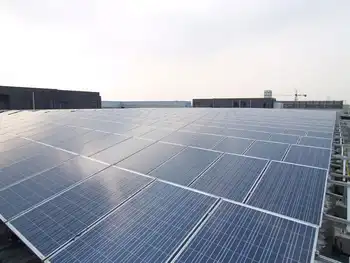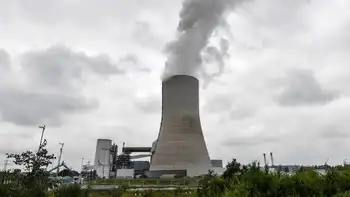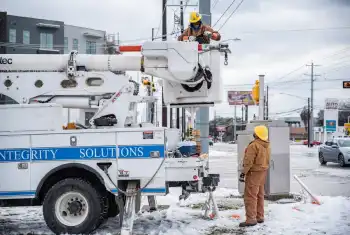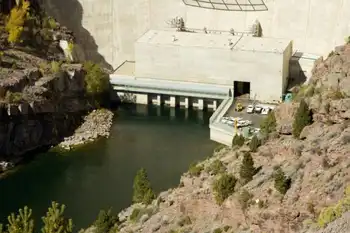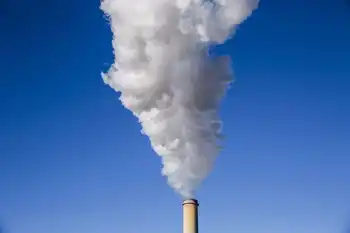Westinghouse ready for nuclear renaissance
By Pittsburgh Post-Gazette
NFPA 70e Training - Arc Flash
Our customized live online or in‑person group training can be delivered to your staff at your location.

- Live Online
- 6 hours Instructor-led
- Group Training Available
No deaths resulted, although critics questioned the health effects of radiation released during the event. Still, the worst nuclear accident in U.S. history left the public, government and industry skittish about nuclear plant safety.
Seven years later, those fears intensified when the explosion at the Chernobyl nuclear reactor in northern Ukraine killed 57 people and turned a 19-mile region into an uninhabitable "Zone of Exclusion." The United Nations Scientific Committee of the Effects of Atomic Radiation predicted up to 4,000 additional cancer cases would develop around Chernobyl as a result of that event.
Nuclear plant construction stalled in the United States after TMI, and nuclear plants today provide about 20 percent of the nation's electricity. But Westinghouse radiates expectations that improved technology, safety measures and modern-day plant efficiency will boost the industry's image in an age of growing concern about coal-fired power plant pollution and its impact on global warming.
Westinghouse, which is scheduled to begin moving in June from Monroeville to Cranberry, designs plants and provides fuel, services, technology and equipment to utilities and others in the commercial nuclear electric power industry.
Nuclear Regulatory Commission spokeswoman Elizabeth Hayden described Westinghouse as a major player in the industry "mostly because they are the front-runners of the new standardized design that gives them a leg up in marketing to potential plant builders."
"They are in pretty good shape and have a lot of experience," Ms. Hayden said.
Westinghouse survived the post-TMI era by providing plant and equipment maintenance, fueling services and training for a nervous industry refocused on safety, said Larry Foulke, former president of the American Nuclear Society and director of the nuclear program at University of Pittsburgh's Swanson School of Engineering.
But it never ceased work on improved plant designs and eventually obtained NRC certification of its AP1000 design and its smaller predecessor, the AP600. A certified design enables a builder to construct that plant without undergoing additional NRC review.
Dr. Foulke said Westinghouse's success with its AP1000 design makes it "a key player in the nuclear renaissance."
"The nuclear vendors are gearing up for the expected renaissance, and I believe the renaissance will happen," he said. "But with the current financial markets, the renaissance may be slowed down.
"The biggest disadvantage of nuclear power is the initial high cost of building plants in the first place."
Westinghouse's AP1000 power plant design will be used in two Chinese plants under construction in Sanmen, two more in Haiyang that are expected to be ready for operation in 2013and 10 others on drawing boards in the United States, China and Europe.
Carrie Phillips, spokeswoman for Southern Nuclear Operating Co., which runs nuclear power plants in Georgia and Alabama, said the company will have an AP1000 plant running in 2016 and a second one in operation by 2017. The plants, to be built at the Alvin W. Vogtle Electric Generating Plant in Burke County, Ga., will represent the first of a new generation of nuclear plants in the United States.
"The main reason is confidence in the vendor and the design that already is certified by the NRC that allows us to work within our schedule to meet baseload generation (of electricity)," Ms. Phillips said. "Westinghouse never got out of the game and continued to invest and develop new technology."
The NRC said 14 of 26 applications now pending for nuclear power plant construction will use Westinghouse technology. Half of the world's 440 nuclear power plants already use it.
"We want a system that is fail-safe," said William E. Cummins, Westinghouse vice president for regulatory affairs and standardization. "We measure the probability of some core damage in one year of operation, and we want the probability to be real low."
An 1,100-megawatt AP1000 plant would have a base price of about $4 billion, the company said. For its AP1000 technology, the risk of public radiation exposure is listed as 4 parts per 10 million.
"That's about the same chance of getting hit by a meteor while walking down the street," Mr. Cummins said.
Westinghouse's design, which took 20 years of research and development, involves a complex mix of physics during which neutrons bombard radioactive uranium-235 to break it down into byproducts and isotopes while producing energy.
Westinghouse plants use three confined water systems. The first involves water heated by the reactor core. A second enclosed system then heats water, producing steam inside a steam generator, which powers a turbine. A third enclosed water system helps to cool steam back to water.
"This is exactly the same as TMI, but the difference is the safety system," Dr. Cummins said.
The safety system uses gravity rather than pumps and electricity to prevent a meltdown.
The AP1000 design places a large tank of cooling water higher than the reactor. Should problems occur and the reactor core begin to overheat, pressure differences cause an automatic release of water, which flows downhill into the reactor to cool the core.
It also requires a novel containment dome to cool resulting steam from an accident. Steam cooled back to water is funneled back through gutters to the tank that cools the core.
Radioactive waste — a longstanding concern of environmental advocates and nuclear power critics — can be stored indefinitely in water on the plant site, company officials said.
Westinghouse is working to obtain NRC certification of smaller power-plant designs to provide energy for small towns and industries. One plant uses helium gas as a coolant rather than water; another produces heat rather than electricity. Plans include construction of a pilot 10-megawatt plant in Galena, Alaska, to replace expensive diesel fuel that must be flown in to power the remote town of 750.
"We're assessing the market for power-plant models," said John E. Goosen, director of Westinghouse's Science & Technology Department. "There's a big market if someone had one to sell."





